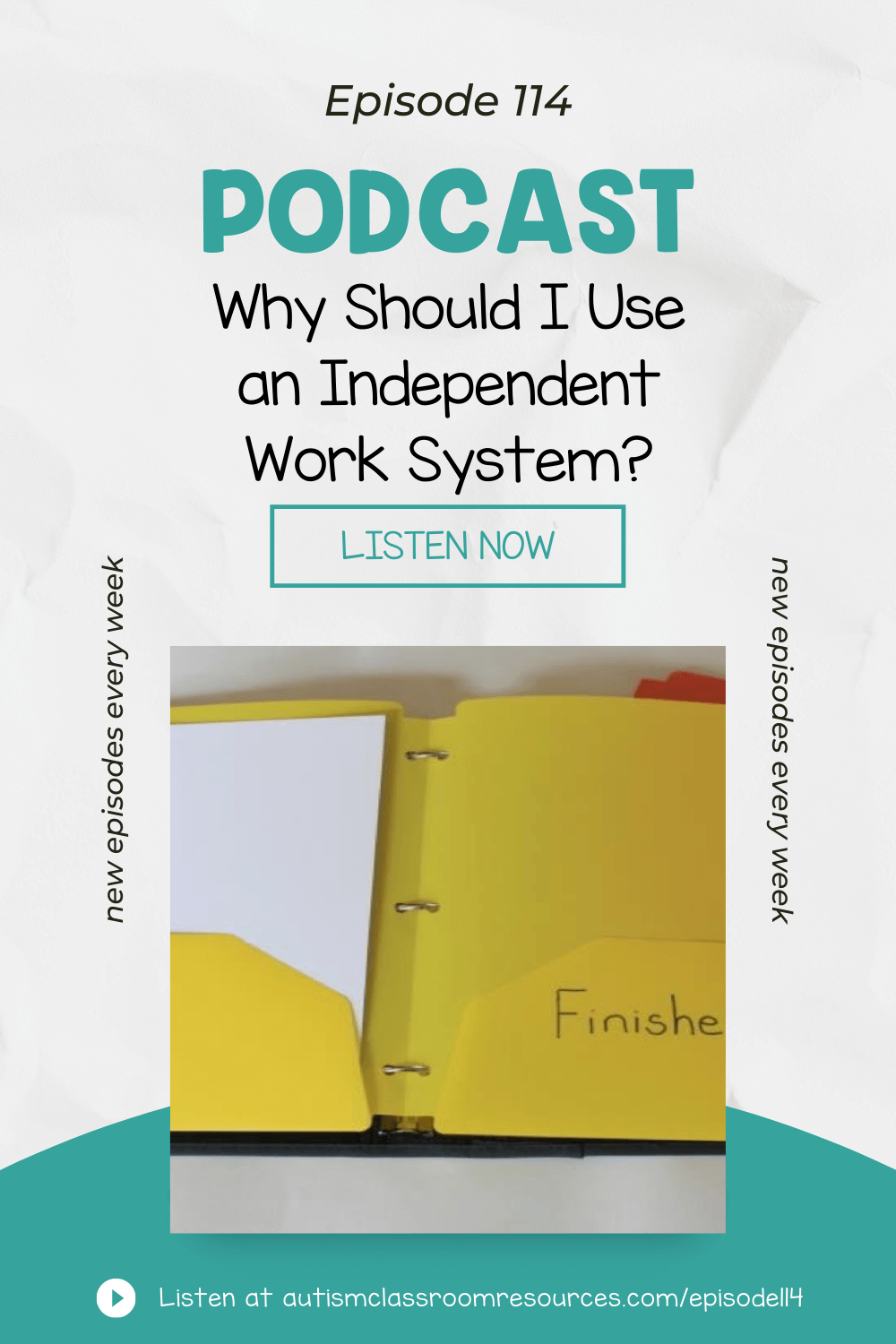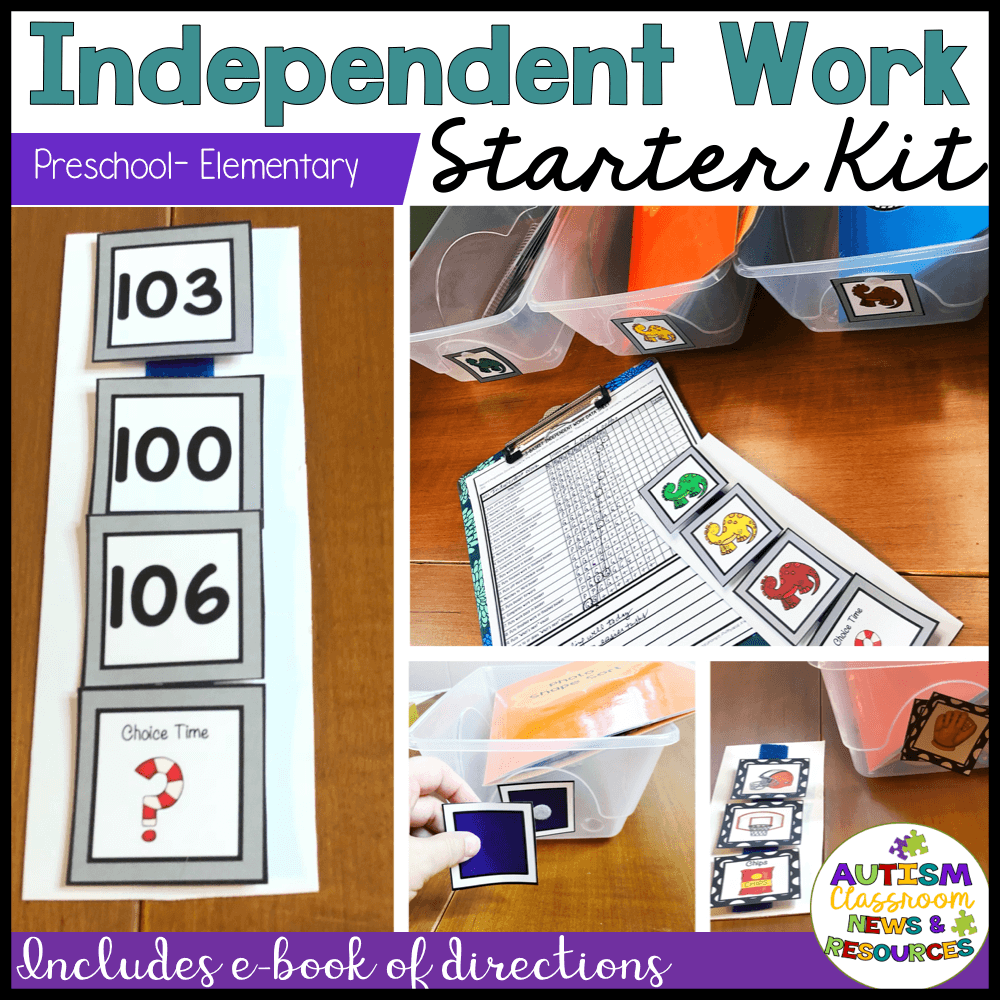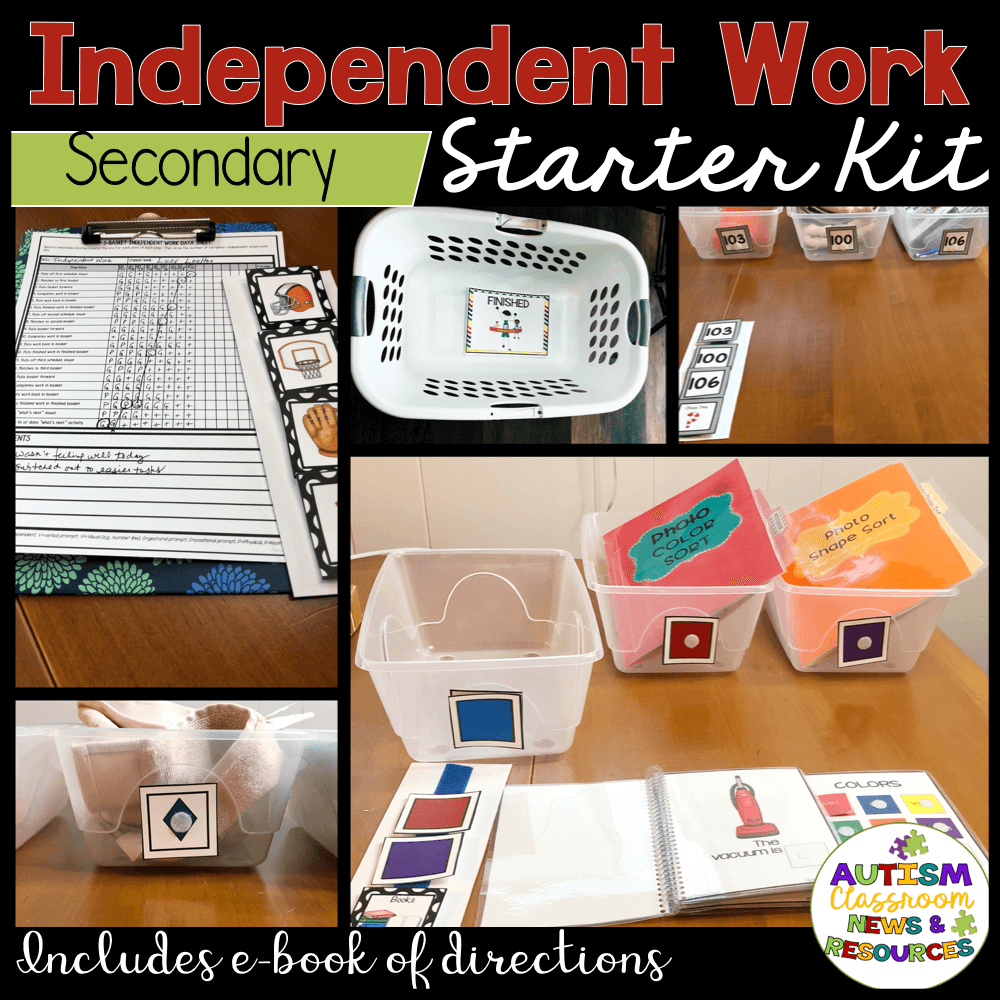Welcome to the Autism Classroom Resources Podcast, the podcast for special educators who are looking for personal and professional development.
Christine Reeve: I’m your host, Dr. Christine Reeve. For more than 20 years, I’ve worn lots of hats in special education but my real love is helping special educators like you. This podcast will give you tips and ways to implement research-based practices in a practical way in your classroom to make your job easier and more effective.
Welcome back to the Autism Classroom Resources Podcast. I’m Christine Reeve. I’m your host. If you have listened for a while, or read the blog, or followed me on Facebook or Instagram, then you have to know that building independence in our students is one of my huge passions in life. There is probably a really simple reason for that. I am the sibling of a sister with developmental disabilities. She has an average IQ and her disability was not very visible when she was going through school. She got through high school with no special education support. She is much older than I am and I’m old enough. When she went to school, there were really two choices. If you needed Special Education, you went to a separate school. In fact, the man that she married went that direction. Someday, I’ll tell you about him. She was in regular classes her whole career. No kinds of supports other than a very devoted mother and father who helped her a ton.
Now, I told you a little bit about her when we were talking about life skills last month. Clearly, she didn’t get her life skills training at school although back then they did have home ed classes so she learned to cook and sew. But throughout her life, even now into her 60’s, my sister’s biggest dream was to live on her own. She didn’t want a million dollars. She didn’t want a big house. She just wanted to live in an apartment independently, to not live with her parents for the rest of her life. She wanted to have a job. She wanted to have money to live on her own. You get the point. That doesn’t seem like too much to ask from someone who graduated from high school and had an associate’s degree in accounting, but it’s not that simple. Those of you who work with individuals with autism probably know that already because even though she had a lot of skills academically and her memory was amazing, she wasn’t and isn’t a great problem solver.
She was a great worker however. If she had a task that she knew how to do, she knew what was expected, and it was work that she understood, then she worked harder than any other person I’ve ever worked with. I’m using the past tense because she’s no longer working. Her work ethic is amazing. Her attention to detail is excellent but her ability to organize a task, her ability to figure out how to do it, to solve a problem if a problem came up, that’s where she ran into problems and frustration.
Now, I promise you that this is not a whole episode about my sister but today’s episode is about why independent work systems are important. I think she’s a pretty good example because if she knew how to do a task and the task was set there without any snags, she could do it. But if she wasn’t sure about something like what was expected or where something went, she would get stuck. I don’t mean that she would get stuck like you and I might get stuck and ask for help. I mean, she might just sit there until someone came over and asked if something was wrong or until she had a meltdown because the fax machine wasn’t working. While I know that many of us would have a meltdown because the copier wasn’t working, again, usually it wasn’t an everyday thing.
Today, I want to talk about why I think every special education classroom and even students in general ed, with or without autism, should have some kind of independent work system. I know that some of you may be saying, “That’s exactly the reason why they shouldn’t have a system,” but I’m going to tell you how an independent work system can be used to address exactly the kind of problems that my sister had that I’m talking about.
I’ve used systems for students without autism really successfully. We even have a couple research studies that had individuals that were not on the autism spectrum and they used them successfully. Tell me that you haven’t had a student who didn’t have autism who turned around to you after every math problem on his paper to check to see if his answer wasn’t right. He needs a work system. Speaking of work systems, did you know that I wrote a book about independent work systems? There are tons of ideas about getting your system set up the right way, lots and lots of tasks. I’ve got a shortcut for you that you’ll find on the blog about starting independent work systems in your classroom. It’s a quick 45-minute free webinar that will get you started with them the right way. It’s got a bonus if you watch to the end on how to set up and monitor your students’ independence. You’ll find the link to that in the show notes or at autismclassroomresources.com/episode114. Now, let’s get started.
Part of the reason that my sister struggled with independence is because she never really learned how to manage those situations where there was a problem. She did learn to work independently but not how to use a system to do it. I talked last week about independent work systems and what they are. You might have an idea from that, that they require someone always to set up the system for the student in order for them to be independent. That’s where they start. But the whole point of a work system is that we want to set it up so that eventually the student sets it up for themselves. That if they hit a snag, they know what to do because we’ve taught them how to do both of those things using the structure of the work system itself.
Once they know the structure of the system, then we can start sabotaging the system a little bit and supporting them in solving the problems so that they become more independent at managing them. I want to start with talking about the benefits to the classroom because there are definite benefits to a work system in your classroom itself. Then I’m going to end by talking more about the benefits to the student. I’ll talk about how we take it to helping them problem solve. You should be doing structured work systems in your classroom because it allows you to break your work into smaller groups. Once your students are able to work independently, that allows you to have an extra center time so that you can break your center times into smaller groups and you can do more individualized instruction.
Independent work systems also can help to reduce challenging behaviors because all of your students can be actively engaged in activities without people having to be engaged with them. You often see a reduction in stereotypical behavior, which some people will call self-stimulatory behavior, because the students are engaged. They’re not just hanging out with stuff to do, they know what needs to be done. I’ve also found that many of our students will engage in the independent work system when there’s an emergency in the classroom. We’ll pull some of those tasks in and get them engaged in their work system to keep them busy during a crisis. It’s also a really good center even if your students aren’t independent yet. It’s an easy center to train your paraprofessionals to implement. You can set it up with a checklist, they can run that system fairly easily and the students are engaged. That way, again, you’re freed up to teach.
Let’s talk about what it does for your students. It teaches independence which is a critical life skill. We want our students to avoid getting dependent. One of the issues of a student receiving special ed services is that they are surrounded typically by more adults that you see in a typical education setting. That means, there’s more people providing support to them which means we have to work extra hard at fading that support. Independence is a huge skill that our students need us to concentrate on. Work systems are designed specifically for the students to learn to work independently. There’s a whole system that we use to teach the skills to independents. We don’t use verbal prompts during independent work. We fade the adult assistants as much as we can. You can learn more about that on the links that I have in the website post for this on how to do that. I’ll make sure that we’ve got a link to how we teach independent work systems because I can’t explain that really well here. It’s also in that free webinar that I referenced.
We can teach skills and maintain them, so those skills that we taught up in our teacher-centered centers, we can help our students maintain because they get extra practice. Many of our students, not just our students with autism, struggle with keeping skills over time. We taught it to them yesterday. They had it, but today they come back in and it’s like they’ve never seen this task before. Giving them an opportunity to practice those skills increases the likelihood that they’ll maintain them. We also can present it to them with different settings, different materials so it makes it more likely that they’ll generalize those skills to new situations.
It also helps our students build fluency by practicing those skills that we’ve taught in different ways regularly. They access those skills faster and more efficiently. It helps them to use those skills with more complex tasks later on because they practice them to fluency. It also gives them pride in work and builds their self-esteem, which I know is a controversial task for a behavior analyst to talk about, but I don’t think any of us can deny that we are proud of work that we do. Our students should have the opportunity to do that too. The opportunity to work independently and complete something on their own is a real sense of pride for them—having times and things that they can do on their own. It’s often the reason that it is one of their favorite times of day.
It also is a time where they get to do something where nobody is telling them what to do. For students to spend a good portion of their day with people directing them, that can be a really great time for them for people to leave them alone and get to do stuff on their own. It teaches them to work without somebody telling them what to do, which is huge for our students.
Once the students get independent with their systems, we can even start to sabotage the system. We could start presenting them with challenges like not giving them all the needed materials, or giving them unclear directions, or perhaps we give them the materials but we don’t tell them what to do with them. We start essentially creating challenges that they would encounter in typical environments. What we’re trying to do is once they know the system, they’re strong on it, and they’re independent, we only do it then, we start making it look more and more typical. We start to fade this system out a little bit but only one little piece at a time. We start small with situations that won’t upset them too much because we’re always trying to maintain that balance between frustration for learning and frustration that overwhelms.
Over time we can build in bigger steps and bigger challenges. This is one of the ways that we use the systems to build more independence beyond just doing the system. Independent work systems aren’t designed to stay the same forever. They aren’t designed to have an adult set them up for the student forever unless that remains what the student needs as we’re attempting to evolve the system. Some of our students won’t move beyond that but many of them can. They are designed to be faded just like all visual prompting systems and to change so that as the students grow, they become more independent. That’s why the type of schedule changes from a movable schedule that matches to the basket to a to-do list. It’s why we move from baskets to folder systems for some students. It’s why we might move it from the self-contained classroom to the general ed classroom during morning work time.
The key is to slowly make these changes while the student is continuing to be successful to shape his independence. These are the changes that my sister didn’t have built into her learning. When she hits a bump now, she melts down because she didn’t have a supportive environment in which to learn how to problem solve the situation. Independent work systems give you that supportive environment where the rest of the system is understood so you can isolate just one variable to challenge and address, and do it in a supportive environment.
Those are some of the reasons why you would want to implement independent work in your classroom. Independent work systems are so much more than busy work and so much more than task boxes. But you have to do them right as I talked about in last week’s episode. They have to grow with the student in their complexity. Students’ independence is the greatest gift that we can teach them. Independent work systems are one tool in our toolbox to build independence and to help students to generalize and maintain the skills that we’ve taught them.
I hope that gives you some idea of how they might help you and help your students. If you want to get started with them or just brush up on the basics, make sure to grab the Free Independent Work Webinar in the show notes or on the blog at autismclassroomresources.com/episode114. It’s got some great bonuses at the end you can grab to help you track students’ progress towards independence and to keep track of your tasks. I hope that you’ll join me again next week for another episode about independent work systems. In the meantime, I’m going to put this episode in the finished bin and move on to what’s next.










